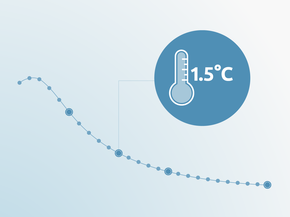Country summary
Overview
There has been no improvement Switzerland’s currently implemented climate policies since the last CAT update, and the policies still fall far short of its Nationally Determined Contribution (NDC), which stipulates a 50% reduction in emissions below 1990 levels by 2030. We rate the NDC “Insufficient,” meaning that Switzerland’s climate plans are not consistent with holding warming to below 2°C, let alone limiting it to 1.5°C as required under the Paris Agreement, and are instead consistent with warming between 2°C and 3°C.
Swiss climate policy needs more action: with its currently implemented policies it falls short of even meeting its domestic 2030 target of a 30% reduction below 1990 levels suggested by the government (‘Bundresrat’ or Federal Council), let alone the overall 50% reduction below 1990 levels by 2030 set out in its Paris Agreement pledge.
Planned policies aim at a continuation and strengthening of existing policies and would achieve a 2030 target of a 35% reduction below 1990 levels.
The transportation sector will especially need increased policy attention to meet the commitment made in the Paris Agreement. While considered a frontrunner for its investment and recognition of the opportunities from modal shift to trains, Switzerland is lacking a comprehensive road transport decarbonisation vision. Switzerland could usefully follow other countries in phasing-out of fossil fuel cars in new car sales within the next 10–20 years and implement policy steps to step up the transition towards a decarbonised economy. The recent establishment of a roundtable to develop a roadmap to increase the number of electric vehicles is a welcome first step. Further details about the content of the roadmap are expected towards the end of 2018 after initial stakeholder consultations.
Switzerland communicated an indicative emissions reduction target of 35% for 2025 below 1990 levels. Previously, Switzerland had made an unconditional commitment under the Copenhagen Accord to decrease emissions by 20% below 1990 levels by 2020.
Further analysis
Latest publications
Stay informed
Subscribe to our newsletter






